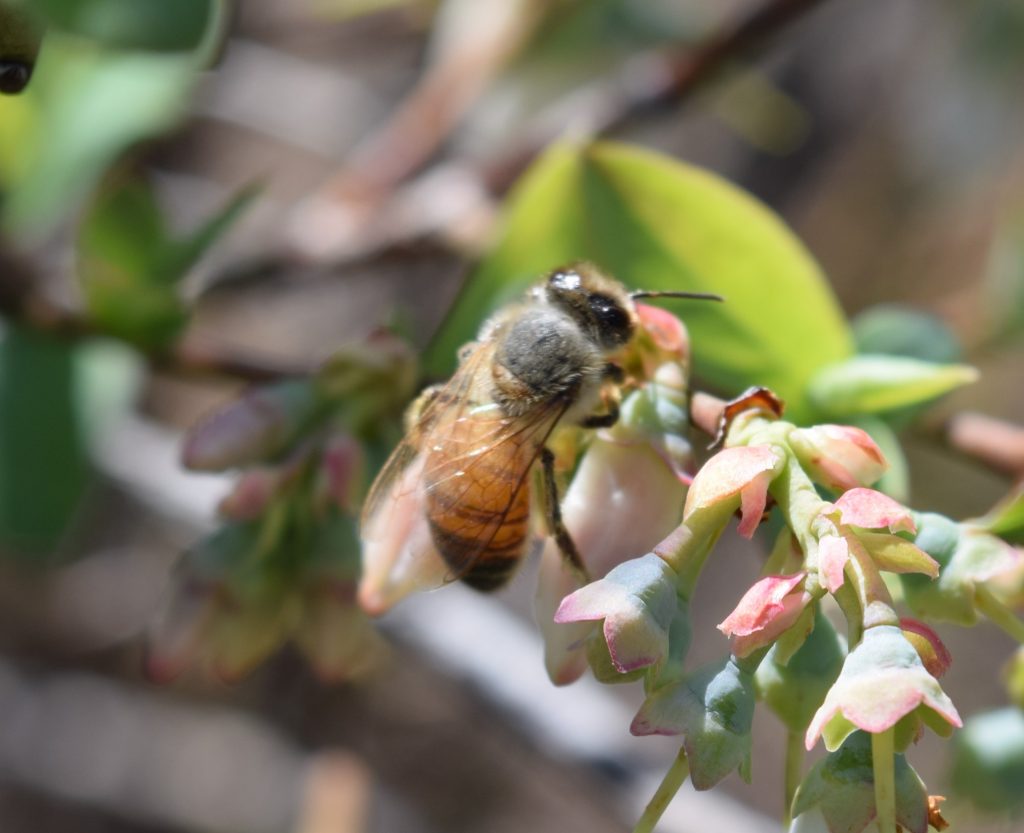
A national group of scientists, including University of Florida researcher Rachel Mallinger, hope to learn more about how blueberry growers use pollinators to boost their yields for the state’s $60 million-a-year industry.
Mallinger is surveying Florida blueberry farmers to see how they utilize pollinators.
“Pollination is extremely important for blueberries as little to no fruit forms without it,” said Mallinger, a UF/IFAS assistant professor of entomology. “While there are different ways plants can be pollinated — including wind, animals and gravity — blueberries depend greatly on insects, primarily bees, for pollination. Research has shown that when you exclude insect pollinators, yields are very, very low.”
Mallinger is an investigator on a $2 million, U.S. Department of Agriculture project. Michigan State University leads the grant, with help from UF/IFAS, Washington State University and Oregon State University. Researchers will gather blueberry farmers’ responses to a questionnaire about pollinators.
What Pollinators to Use?
Survey results will help scientists provide growers guidelines as to which pollinators to use — for example honeybees, bumble bees or both – and how many to use, Mallinger said.
“Right now, we think growers make their decisions based on trial and error and their own past experiences, as well as on the experiences of other growers they know,” she said. “We expect farmers will report significant pollination problems, but that this may vary across cultivars, with some cultivars more frequently getting poor pollination.”
Through the survey, Mallinger hopes to find out:
- How farmers utilize pollinators.
- How satisfied they are with their pollinators.
- Barriers to successful pollination.
- The economics of blueberry pollination.
There is no current deadline for farmers to complete and turn in the survey.
“We will use survey results to track change during our project, then we will give information and recommendations to growers,” Mallinger said.









